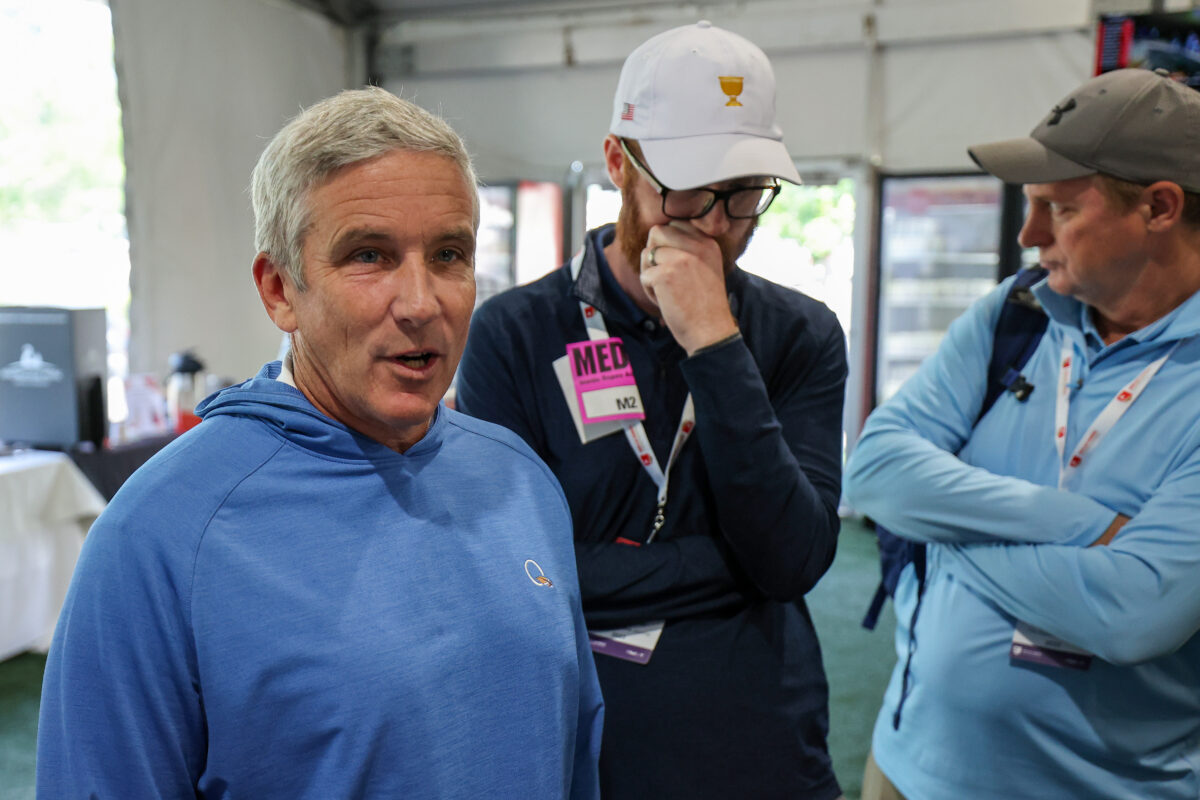ORLANDO – Not long after the PGA Tour board of directors finished a meeting at Bay Hill Club and Lodge on Tuesday night that lasted more than seven hours and transformed the Tour for years to come, Peter Malnati sat down and poured out his feelings in a journal entry.
“I had to get that stuff out of my head,” he said. “I just couldn’t believe how much I had transformed my view on what we were doing.”
Until recently, Malnati, who is one of five player directors on the Tour board, had been adamantly opposed to the concept of instituting eight designated events with no cuts and reduced fields for the best players, which would mean fewer playing opportunities for the rank and file, or as some like to say, the Peter Malnatis of the world.
Malnati knew his 180-flip would also shock many of his brethren so he sent what he wrote to several of his fellow players.
On Friday, he sent a copy to Golfweek and said, “Just print that, print it for me, let the world see that. Because I think everyone thinks that we’re screwing up and I really actually don’t think we are.”
So, here’s Malnati’s journal entry:

After Golfweek had a chance to read his thoughts, Malnati expounded on several of the key decisions and what went into them. (He did podcasts with Fire Pit Collective and No Laying Up that are worth listening to as well.)
“It was the only way to protect the little guys,” he said of supporting the Tour’s vision for the future. “If I fought for 120-man fields, we’re going to end up with eight $20 million events on Tour and however many, you know, 26 $2 million events on Tour; it just wasn’t good. When I saw the numbers, you couldn’t ignore it.
“Like, you couldn’t ignore what the (regular event) fields were going to look like if designated events had 120. Again, we don’t even need to have that good of an imagination. All we need to do is look at Honda this year and see it obviously got screwed with the schedule.”
What has been the initial reaction to Malnati’s journal entry?
“Probably similar to what you might see on Twitter. But it’s amazing how quickly like I got guys that I really thought would firmly hate this and be like, ‘Oh, I get it, it’s actually going to be OK. I thought there were going to be more designated events,’ ” Malnati said. “This is hard to digest because it’s a big departure. And it seems on the surface, like it’s only good for the big guys. And I just think having given it a week to sink in, this helps not just the big guys, this is going to make this Tour stronger from top to bottom. I know people aren’t going to believe that at first, but it took a lot to change my mind.”
Malnati conceded that there might be a different vibe among the rank-and-file competing this week for a purse of $3 million in Puerto Rico at the Tour’s opposite-field event.
“I bet guys there might be a little bit more freaking out because just on the surface of it, you know, taking events that we’ve always played at 120 or bigger – like Travelers – and making them 70, mid 70s-ish fields, on the surface, it can only be taking playing opportunities away, but I think having been exposed now to the data and seeing what playing these eight events as small fields, what that does to the rest of the events on Tour, the events that have been the bread and butter for the middle third and bottom thirds of the membership, it strengthens and allows them to thrive,” he said.
“I want more of the members to be able to play $20 million purses, like that’s the whole point of the PGA Tour to provide opportunities for the membership to earn the financial rewards of playing out here. So I’m like, that’s our mission. Why are we even going to tell 50 guys, you don’t get to play in these $20 million purse events? But it became really clear to me because if we make those events 120-man fields they become the only events that have a chance to grow on Tour.”
Malnati said he argued for there to be some cut at the designated events, but that got shut down.
“I hate no cut,” he said. “I actually even brought it up in the meeting, I said, ‘You’ve sold me on small fields. What if we did small field but cut to 40 and ties or something? Could we do that? And they said that they think it’s hard enough – that that distinguishes them enough from what LIV’s doing, the fact that LIV hand-selected guys and set them in the field.
“The answer from some of the independent directors and the Tour staff is that these events are going to be really difficult to qualify for. So, if you qualify for these events, you have in essence, earned the paycheck you’ll get for last place.”
Malnati noted that the approved changes also created a pathway for players in the regular events to get promoted to the tournaments with the strongest fields and largest purses.
“It’s pretty likely Rory (McIlroy) and Jon Rahm and Justin Thomas are going to be the guys that will end up in the top 50. But it’s not given to them, like, that’s still something they have to earn. There’s really isn’t a handout here. They’re going to be hard to get in. In my nine-year career, I don’t know if I would have ever qualified into one of these events. But if you’re playing well, you always will have access. None are ever closed.
“Is it perfect? No, but I think it’s where we need to go.”
Malnati recalls listening to Monahan’s TV interview with Jim Nantz during the RBC Canadian Open when the Commissioner said the difference between the PGA Tour and LIV Golf League is the Tour is the place for true and pure competition.
“It’s only through true and pure competition that you can identify the top players in the world,” Monahan said.
“It was a hard hurdle for me to get over this idea that a small field with no cut can be true and pure competition,” Malnati said. “But I really appreciate and value the fact that these events are going to be hard to get into, you’re going to either have played super-consistent golf for an entire season in the prior year, or you’ve got to be really, really hot right now. And you’ve got to either have won this season, or played this last little stretch of events really, really well to get into the designated men.”
Of all the reasons that swayed Malnati, none was more convincing than the data that the PGA Tour staff provided that showed there will be more churn among the top 50 than he expected.
“I’ve learned over the years that my guts good on the golf course, but it’s bad when it comes to analytical stuff like this,” he said. “Like my gut would have told me, if you give the top 50 eight events, no cut, slightly increased FedEx Cup points, you know, 42 of them are going to stay in the top 50. In a thousand simulated seasons, the average retention of the top 50 was 64 percent. My gut tells me it’s going to be more than that. But I gotta trust those numbers, that the Tour is not manipulating any of these numbers that they showed us. I mean, they ran it on their software and said in a thousand seasons that the least churn would be 14 guys out and 14 in and the most churn to be 22. Like it’s good, that’s good. Like it’s really good. I wouldn’t have thought that; it seems kind of hard to believe.”
And that’s why he did a 180 and helped make the vote in favor of the Tour’s plan unanimous and the reason that the former University of Missouri journalism major was compelled to jot his thoughts down.
“Because I really didn’t think there was any way I would vote for it,” he said. “They needed two of us to oppose this idea in order for this idea to go back to the drawing board and be discussed more. And I was certain that they had one in me that was going to oppose it.
“And then you just sit there and you look at this data and you think about the events on Tour that you love – John Deere and Valspar and Sanderson Farms – to see how playing the designated events with full fields would decimate the field for an event like John Deere was incredibly powerful.
“Anyone that had voted against it would have been the only one who voted against it, so it wouldn’t have made any difference. But I would have been not serving the people that I promised to serve if I had tried to vote this down. This is going to help keep the events that the middle and bottom third of the PGA Tour play the vast majority of their playing opportunities. It would have made them weaker and going forward with this model is going to make those events stronger. It really is.”
Malnati finished his missive with this profound declaration: “Last week I was scared, today I couldn’t be more optimistic about the PGA Tour for our sponsors, fans, media, partners, and, most importantly, every single member.”
[lawrence-related id=778328449,778328163,778327977]
[mm-video type=playlist id=01es6rjnsp3c84zkm6 player_id=01evcfxp4q8949fs1e image=]





